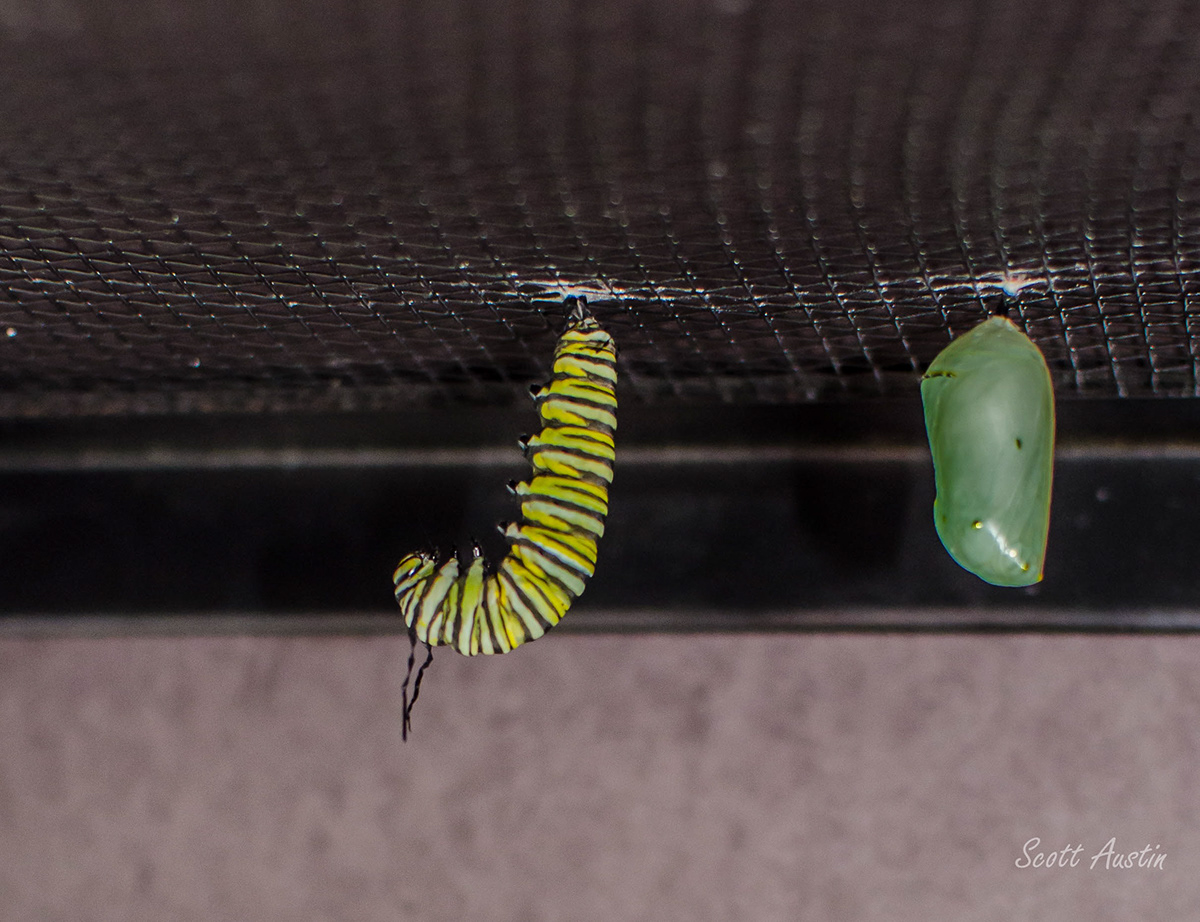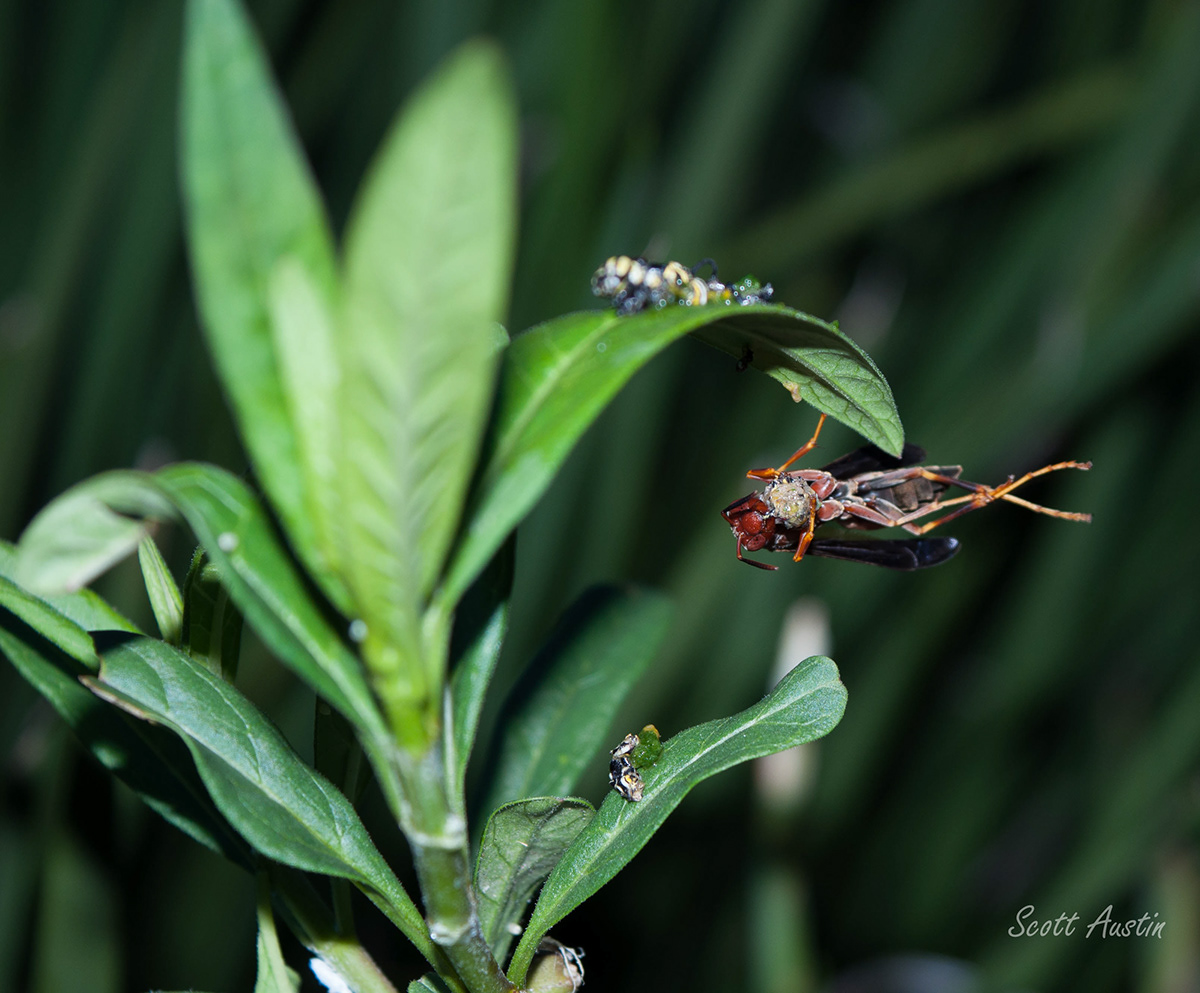
Monarchs Feeding, Pooping, and Shedding.

After a Few Days of Eating, They Are Ready For Chrysalis

They tether themselves upside down and shed their skin

Now they transform from the green blob on the right to the hardened chrysalis on the right.

After a few days the hard green shell gets thin and clear.

At about one week, the shell breaks and the Monarch emerges.

The wings are small and wrinkled, but the belly is full of liquid that is pumped into the wings. Once the wings are full, they need time to dry because they feel like wet paper. The Monarch cannot fly at this time and is very vulnerable to predators.

They flap their wings to dry them.

They mostly hang out near the milkweed, so they can hide, feed, and meet a mate.

I liked her stance in this photo.

This is a male showing off his wings.


Wasp are one of the biggest predator and feeds on them as caterpillars and butterflies. This one is eating the remains of a small caterpillar.

This poor caterpillar was large, but no match for this brown wasp. He chopped him into bite-sized pieces and then tried to find a quiet place to enjoy his meal.

The wasp crawled under the leaf, held on with one hand, crossed his legs, and enjoyed his meal.


Some of the Monarchs do not develop properly and emerge with defective bodies. They are usually picked off by predators quickly, but other monarchs will knock them out of the milkweed to ants waiting below.


Those that make it start mating once they can fly. The males pick up the feamle and fly around with them. In this photo another Monarch is waiting his turn.

The milkweed is full of life. Even the tiny flowers have ants living inside.
